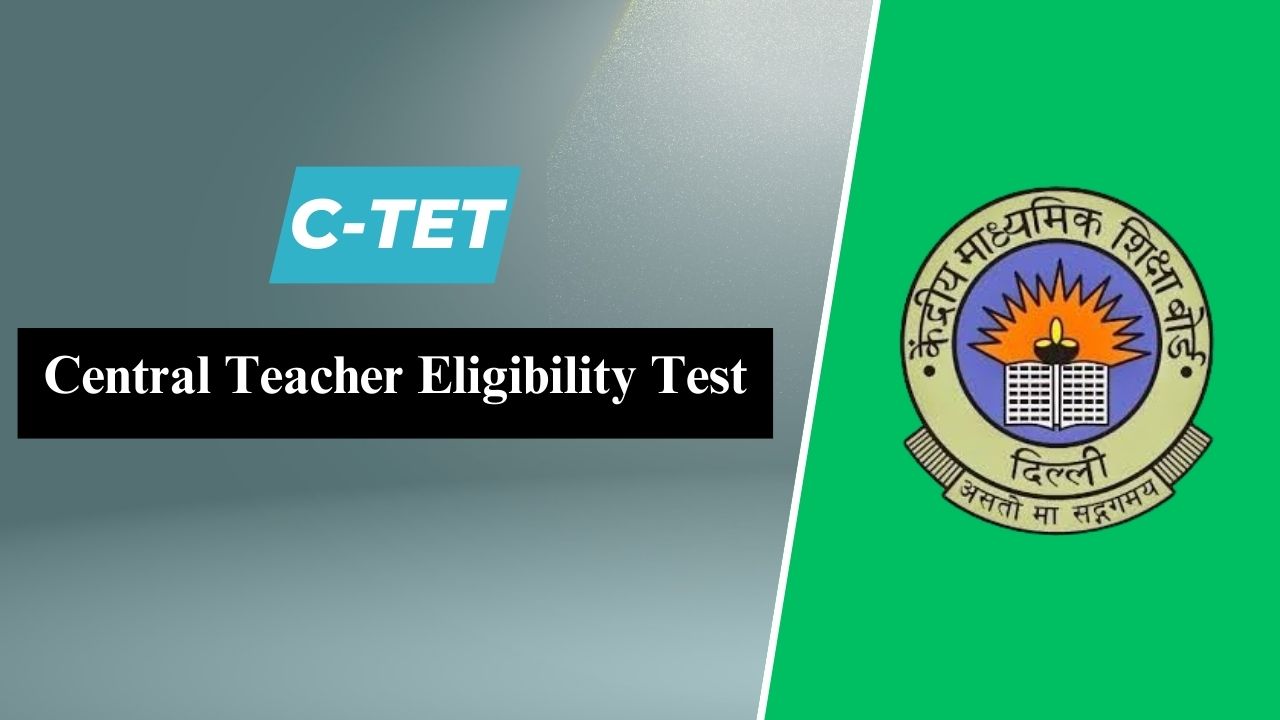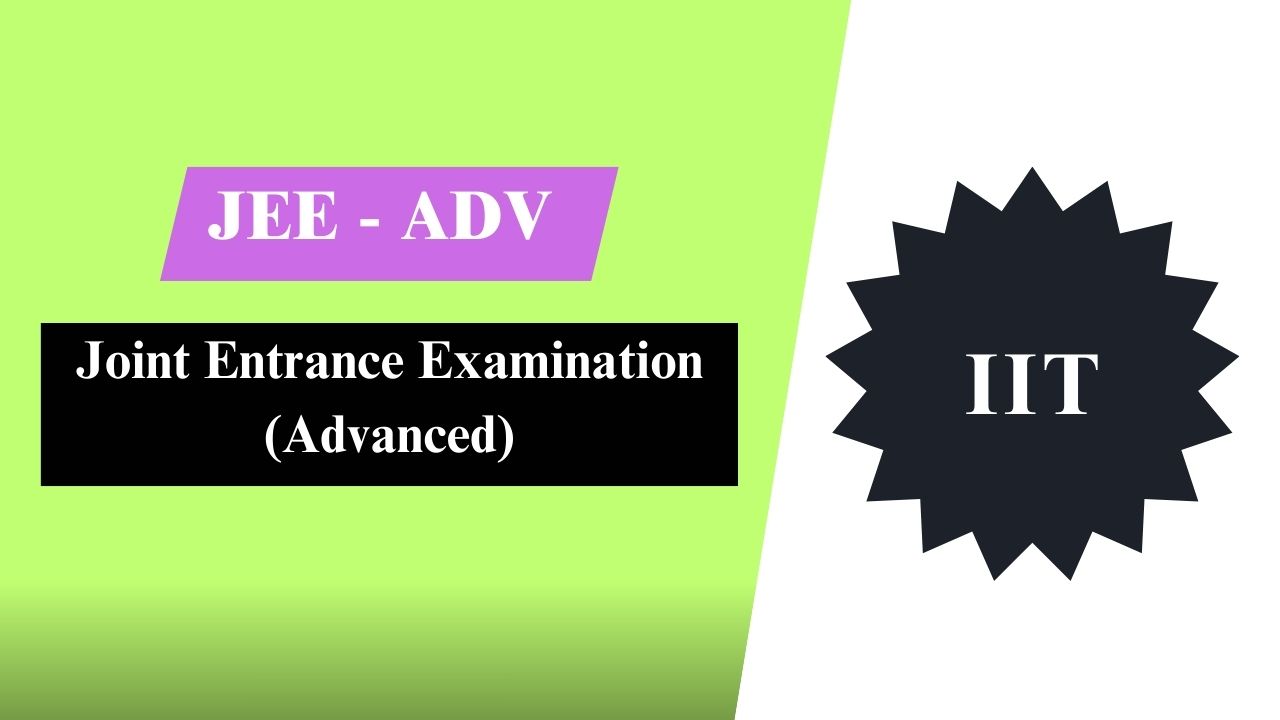What is CTET Exam? - Full Form, Exam Pattern & Selection Process

What is CTET Exam?
The full form of CTET exam is Central Teacher Eligibility Test. It is a national level Central Government teacher eligibility test conducted twice every year by the Central Board of Secondary Education (CBSE). This exam is for those candidates who want to become teachers in central schools. After passing CTET, candidates are given preference to apply for teaching posts in central government schools affiliated to CBSE. There are mainly three types of CTET exams.
- CTET Paper 1
- CTET Paper 2
- CTET Paper 1 + CTET Paper 2
1. CTET Paper 1
CTET Paper 1 is also known as PRT (Primary Teacher). CTET Paper 1 is for those candidates who want to become teachers at the primary level (Class 1 to 5). The purpose of CTET Paper 1 is to test whether the candidate has the pedagogical knowledge, child psychology and subject understanding required to teach small children. If you are preparing for PRT (Primary Teacher), then CTET Paper 1 is mandatory for you.
2. CTET Paper 2
CTET Paper 2 is also known as TGT (Trained Graduate Teacher). CTET Paper 2 is for those candidates who want to become teachers for classes 6 to 8 (Upper Primary Level). The main purpose of this paper is to check whether the candidate has the ability, subject matter understanding and teaching skills to teach middle school students. If you want to become a TGT (Trained Graduate Teacher) then CTET Paper 2 is a must for you.
3. CTET Paper 1 + CTET Paper 2
Candidates can also apply for both papers if they are interested to teach classes 1 to 8.
CTET Exam Summary
| Detail | Information |
|---|---|
| Exam Name | CTET Exam |
| Full Form | Central Teacher Eligibility Test (CTET) |
| Conducting Body | Central Board of Secondary Education (CBSE) |
| Paper Types |
|
| Purpose | Eligibility test for teaching in classes 1-8 |
| Exam Level | National |
| Frequency | Twice a year |
| Validity of Certificate | Lifetime (as per latest updates) |
| Official Website | Website |
Is CTET Exam Difficult?
CTET Exam is neither very easy nor very difficult. It completely depends on how you have prepared, and which subject you are interested in and have a strong hold on. CTET exam is as difficult as your preparation is weak. If you study strategically, prepare with the right material and give the paper with confidence, then it can become easy and scoring.
CTET Exam Eligibility Criteria
Before applying & starting the preparation for CTET exam, it is important to understand whether you have the right educational qualification and training. The eligibility criteria for both Paper 1 and Paper 2 are different, so it is mandatory to choose the right paper as per your qualification. Here is the eligibility criteria for CTET exam given below.
1. CTET Paper - 1 (Class 1 - 5) Eligibility Criteria
To appear for CTET Paper 1, you must have passed minimum 12th standard with teacher training course. If you meet the eligibility criteria, you can apply for CTET Paper 1.
- The candidate must have passed Senior Secondary (or equivalent) examination with at least 50% marks and should either be pursuing or have completed a 2 year Diploma in Elementary Education (D.El.Ed).
- According to NCTE regulations, the candidate must have secured 45% marks in the Senior Secondary (or equivalent) examination and should either be pursuing or have completed a 2 year D.El.Ed.
- The candidate must have secured 50% marks in the Senior Secondary (or equivalent) examination and should either be pursuing or have completed a 4 year Bachelor of Elementary Education (B.El.Ed).
- The candidate must have secured 50% marks in the Senior Secondary (or equivalent) examination and should either be pursuing or have completed a 2 year Diploma in Special Education.
- The candidate must have completed Graduation with at least 50% marks and should have obtained a B.Ed degree.
2. CTET Paper - 2 (Class 6 - 8) Eligibility Criteria
Graduation along with a recognized teacher training course is required for CTET Paper 2. You can apply for CTET Paper 2 if you have the following eligibility criteria.
- The candidate must have completed Graduation and should either be pursuing or have completed a 2 year Diploma in Elementary Education (D.El.Ed).
- The candidate must have secured 50% marks in Graduation and should either be pursuing or have completed a B.Ed degree.
- As per NCTE regulations the candidate must have secured 45% marks in Graduation and should either be pursuing or have completed a B.Ed degree.
- The candidate must have secured 50% marks in the Senior Secondary (or equivalent) examination and should either be pursuing or have completed a 4 year Bachelor of Elementary Education (B.El.Ed).
- The candidate must have secured 50% marks in the Senior Secondary (or equivalent) examination and should either be pursuing or have completed a 4 year B.A./B.Sc.Ed or B.A.Ed/B.Sc.Ed.
- The candidate must have secured 50% marks in Graduation and should either be pursuing or have completed a 1 year B.Ed (Special Education) program.
CTET Exam Pattern
CTET (Central Teacher Eligibility Test) exam is conducted at two levels, Paper 1 and Paper 2. Both these papers are for candidates who wish to become teachers for different categories. Both these papers are conducted in offline mode.
- Paper 1 (PRT Class 1 - 5)
- Paper 2 (TGT Class 6 - 8)
1. Paper 1 (Class 1 - 5)
CTET Paper 1 is for those candidates who are willing to teach children from class 1 to 5. This exam is for Primary Teachers (PRT). Paper 1 has a total of 5 sections, and each section has 30 questions. All the questions are Multiple Choice Questions (MCQs). The main objective of CTET Paper 1 is to evaluate the educational qualification and teaching ability of the candidates who want to teach children from class 1 to 5.
| Mode of Exam | Offline |
| Section |
|
| Duration | 2.5 hour (150 minutes) |
| Type of Question | Multiple Choice Questions (MCQ) |
| Section wise Question |
|
| Section wise Marks |
|
| Total Question | 150 |
| Total Marks | 150 |
Paper 1 Exam Pattern
| Subject | Part | Question | Total Marks |
|---|---|---|---|
| Child Development and Pedagogy | A | 15 question | 30 |
| B | 5 question | ||
| C | 10 question | ||
| Language - 1 | A | 15 question | 30 |
| B | 15 question | ||
| Language - 2 | A | 15 question | 30 |
| B | 15 question | ||
| Mathematics | A | 15 question | 30 |
| B | 15 question | ||
| Environmental Studies | A | 15 question | 30 |
| B | 15 question |
2. Paper 2 (Class 6-8)
CTET Paper 2 is for those candidates who want to teach students of classes 6 to 8. Paper-2 has a total of 4 sections. It has a total of 150 questions, and all the questions are of MCQ (Multiple Choice Questions) type.
| Mode of Exam | Offline |
| Section |
|
| Duration | 2.5 hour (150 minutes) |
| Type of Question | Multiple Choice Questions (MCQ) |
| Section wise Question |
|
| Section wise Marks |
|
| Total Question | 150 |
| Total Marks | 150 |
Paper 2 Exam Pattern
| Subject | Part | Question | Total Marks |
|---|---|---|---|
| Child Development and Pedagogy | A | 15 question | 30 |
| B | 5 question | ||
| C | 10 question | ||
| Language - 1 | A | 15 question | 30 |
| B | 15 question | ||
| Language - 2 | A | 15 question | 30 |
| B | 15 question | ||
| 1. Mathematics | A | 20 question | 30 |
| B | 10 question | ||
| 2. Science | A | 20 question | 30 |
| B | 10 question | ||
| Social Studies/Social Sciences | - | 60 question | 60 |
CTET Exam Selection Process
The selection process of CTET is very simple and transparent. It mainly consists of a written exam only.
- Answer Key: The official answer key is released by CBSE a few days after the completion of the CTET exam.
- Result Declaration: After the completion of the answer key processing, the CTET Result is released by CBSE on the official website. It contains the marks and qualifying status of the candidate.
- Scorecard and Certificate: Candidates who successfully qualify the CTET exam are given a scorecard and CTET certificate. This certificate is valid for life (till the year 2021 its validity was only 7 years, but now it is valid for life).
- KVS/NVS Process: After qualifying the CTET exam candidates become eligible to apply for teacher posts in central government schools. After the release of CTET scorecard candidates can apply for the vacancies available in their preferred CBSE affiliated schools like KVS (Kendriya Vidyalaya Sangathan), NVS (Navodaya Vidyalaya Samiti), Army Public Schools or CBSE affiliated private schools as per the respective notifications.
- Selection for Interview: Based on the CTET scorecard candidates are selected in the recruitment process of the school they applied for.
- Interview: Shortlisted candidates are called for an interview. The interview tests the candidates' teaching skills, subject knowledge, personal characteristics and skills for some key posts.
- Final Selection: The final merit list is declared based on the interview and skill test. On this basis, the qualified candidates are given appointment letters.
Passing CTET is not a guarantee of getting a job. It only qualifies you to become a teacher. You have to apply for the job just like you would for any normal government or private position.
CTET Exam Career Opportunities
After passing the CTET (Central Teacher Eligibility Test), many opportunities open up for candidates to become teachers. Candidates who pass both the primary and upper primary levels are eligible for many types of jobs in government and private sectors.
1. Primary Level (Class 1 - 5)
After passing CTET Paper 1, many educational career options open up for you. You can not only become a government teacher but can also make a great career in fields like private school, EdTech, NGO, tutoring. Here are some major career options given below:
- Primary Teacher (PRT) in Government School: Candidates can apply for the post of Primary Teacher (PRT) in Kendriya Vidyalaya (KVS), Navodaya Vidyalaya (NVS) and State Government schools.
- Primary Teacher in Private School: After passing the CTET (Central Teacher Eligibility Test) candidates can teach students in many private schools especially CBSE-affiliated schools in primary teacher positions.
- TET Qualified Jobs in State School: CTET certification can also be useful for state level TET exam.
- Special Education Teacher: With additional certifications in special education candidate can work as a primary teacher for students with special needs.
- Coaching or Private Tutoring: candidate can offer coaching for students preparing for primary classes.
- Teacher in NGO or Educational Institution: Some NGO and educational organization hire certified teachers to provide education to underprivileged children.
- Education Consultant: With experience candidate can work as an education consultant, advising schools or education startups on curriculum development, teaching strategies or assessment methods for primary education.
- Content Developer for Educational Material: Many EdTech companies hire CTET qualified individuals to create learning content, lesson plans and teaching material for primary education.
2. Upper Primary Level (Class 6 - 8)
After passing CTET Paper 2, candidates are eligible to teach classes 6 to 8 as TGT (Trained Graduate Teacher). It not only helps in getting a government job but also opens doors to numerous opportunities in the private and alternative education sectors.
- TGT (Trained Graduate Teacher) in Government School: candidate elegible to apply for TGT positions in government schools like Kendriya Vidyalayas, Navodaya Vidyalayas for teaching classes 6 to 8.
- TGT in Private School: CBSE affiliated institutions require CTET certified teachers for middle school teaching positions.
- Subject Specific Teacher: With a specialization in subjects like Mathematics, Science or Social Science, candidate can work as a subject Specific Teacher.
- State TET Qualified Jobs: CTET Paper 2 certification can also be useful for applying to state level TET exams for teaching jobs in classes 6 to 8.
- Educational Content Developer: With expertise in handling middle school subjects candidate can work as a curriculum developer or educational content creator for textbooks or online platforms.
- Private Tutoring or Coaching: candidate can offer private tutoring to students from classes 6 to 8 or coach future teachers for CTET exams.
- NGO and Education Projects: Many NGO or education initiatives look for CTET qualified teachers to handle middle school education for underprivileged students.
CTET Exam Advantages
CTET (Central Teacher Eligibility Test) is a prestigious eligibility test in the field of education, which is conducted by the Central Board of Secondary Education (CBSE). By passing it, candidates get many benefits to become teachers across the country.
- Teaching Career: Candidates who qualify the CTET exam are given a certificate by CBSE. with this certificate the candidate is given preference for the post of teacher in central government schools as well as private schools.
- Nationwide Validity: CTET certificate is valid all over India. Using this candidates can apply in central government and state government schools.
CTET Exam Disadvantages
Here are some disadvantages of CTET exam given below:
- High competition: Every year 30 lakh candidates apply for the CTET exam, with a success rate of 15% to 20%. This means that out of every 100 candidates only 15 to 20 candidates are able to clear the CTET exam.
- No direct job guarantee: CTET is only an eligibility criterion; clearing the CTET exam the candidate is not given a direct job by the central government. Candidates have to apply themselves for the vacant posts in Kendriya Vidyalayas. In this process also candidates have to go through the recruitment process which includes interviews and other selection rounds after getting vacancies.
- Cut off: In the CTET exam the candidate has to achieve a specific cut off mark. Getting this cut off is not easy for everyone.
- Multiple attempts: Sometimes candidates have to make multiple attempts to pass the CTET exam.
- Limited scope: The CTET exam certificate is valid only for central government schools. For state government schools, each state conducts its own TET exam. Due to this the scope of CTET in state government schools and private schools is limited or almost negligible.
Quick Links
- Common Admission Test (CAT) Exam
- Central Teacher Eligibility Test (CTET) Exam
- IISER Apptitude Test (IAT) Exam
- JEE Advanced Exam
- JEE Mains Exam
- National Entrance Screening Test (NEST) Exam
- National Talent Search Examination (NTSE) Exam
- RRB Junior Engineer (JE) Exam
- RRB Non-Technical Popular Categories (NTPC) Exam
- SBI Junior Associate (Clerk) Exam
- SBI Probationary Officer (PO) Exam
- Staff Selection Commission Combined Graduate Level (SSC CGL) Exam
- Staff Selection Commission Multi Tasking Staff (SSC MTS) Exam
- SSC CGL Assistant Audit Officer (AAO)
- SSC CGL Assistant Enforcement Officer (AEO)
- SSC CGL Assistant Section Officer in Central Secretariat Service (ASO in CSS)
- SSC CGL Assistant Section Officer in Ministry of External Affairs (ASO in MEA)
- CBI Sub Inspector (SI)
- SSC CGL Central Excise Inspector
- Indian Administrative Service (IAS)
- SSC CGL Income Tax Inspector (ITI)
- SSC CGL Junior Statistical Officer (JSO)
- SSC CGL Preventive Officer (PO)
- RRB NTPC Railway Station Master
- BE/BTech Aerospace Engineering Course
- Bachelor of Business Administration (BBA) Course
- Bachelor of Computer Applications (BCA) Course
- Bachelor of Commerce (B.Com) Course
- Bachelor of Computer Science (BCS) Course
- Bachelor of Hotel Management (BHM) Course
- Bachelor of Science in Biotechnology (BSc Biotechnology) Course
- Bachelor of Science in Chemistry (BSc Chemistry) Course
- Bachelor of Science in Forensic Science (BSc Forensic) Course
- Bachelor of Science in Microbiology (BSc Microbiology) Course
- Bachelor of Science in Nursing (BSc Nursing) Course
- BE/BTech in Civil Engineering Course
- ITI Computer Operator and Programming Assistant (COPA) Course
- ITI Cutting & Sewing (Tailoring) Course
- ITI Electrician Trade Course
- ITI Electronic Mechanic Course
- ITI Fitter Trade Course
- ITI Hair & Skin Care (Beautician) Course
- ITI Digital Photography Course
- ITI Plumber Course
- ITI Surveyor Course




